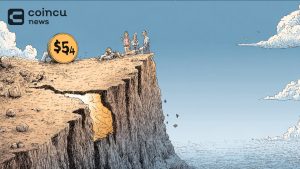$104275.947
At CoinCu News, we give both basic and in-depth articles on the latest news in the cryptocurrency and blockchain sectors.
Author
News
XRP ETF Debuts Strong on TSX—3iQ Sparks Crypto Access in Canada
3iQ launches XRP ETF (XRPQ) on TSX with 0% fees, offering secure XRP exposure to
Jun
BlackRock’s BUIDL Accepted as Crypto Collateral
Crypto.com and Deribit now accept BlackRock's BUIDL as collateral, enhancing institutional trading.
Jun
Bitcoin Holds $100K for 40 Days as Bull Pennant Signals Possible Breakout
Bitcoin trades above $100K for 40 days as a bull pennant forms, with low profits
Jun
China’s Bitcoin Rig Giants Shift to U.S. to Dodge Tariffs
Bitmain, MicroBT, and Canaan move Bitcoin rig production to the U.S. as tariffs reshape mining
Jun
Bank of Korea Considers Cautious Approach to Won Stablecoin
Rhee Chang-yong's stance on Korean won stablecoin highlights concerns over banking sector and FX stability.
Jun
K33 to Buy 1,000 Bitcoin After Raising $8M Fast
K33 raises $8M via share offering to buy 1,000 BTC, joining firms like Metaplanet in
Jun
Crypto Accounts Reinstated Following Massive X Ban Uproar
Crypto accounts, including GMGN, are reinstated on X after unexpected bans, sparking major community relief
Jun
Binance Alpha Adds BEE in New Token Event
Binance Alpha users can now engage with BEE through a new token generation event.
Jun
XRP and Solana Spot ETFs Under SEC Review
U.S. SEC opens public comment on XRP and Solana ETFs submitted by Franklin Templeton.
Jun
[tptn_list how_old="7" limit="5" title_length="0" heading="0" show_date="0" ]
[tptn_list how_old="30" limit="5" title_length="0" heading="0" show_date="0" ]




















